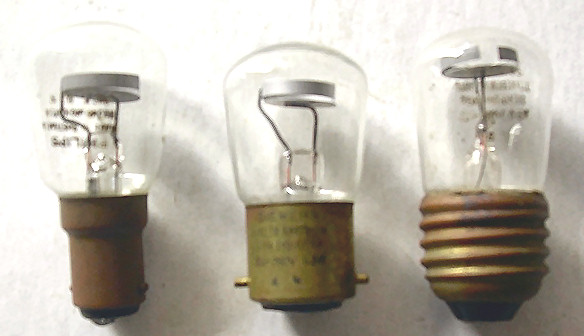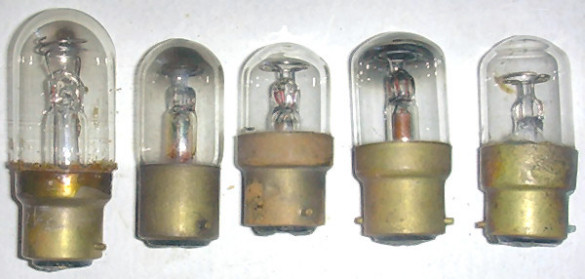I would like to thank Fin Stewart for supplying the following article. Fin is a noted lamp collector and historian who resides in
Wingham, Australia and can be contacted at the following email address:

Australian Neon Lamp Manufactures
by Fin Stewart
Two companies existed in Australia making neon lamps. These were the Electric Lamp Manufacturing Association and Hogan Industries. Both are now out of business.
The Electric Lamp Manufacturers Association
The Electric Lamp Manufacturers Association (ELMA) was a shareholding company operated jointly by Philips of Holland, GEC (Osram), and B.T-H. (the British arm of the GE Co of the USA). The factory, which was in Newcastle, some 150 Km north of Sydney, started making household lamps in 1931 and closed for economic reasons in 2002. In the early 1950's the factory made a range of "pilot" type neon lamps which were fitted with BA15d, B22, E14 and E27 bases. I have never seen an E14 lamp. They were made in two voltage ranges: 100-130 and 200-260, and all had internal resistors. The elements consisted of a metal ring surrounding a metal disc. The lamps were based on the British products available at the time and the elements were probably imported from the UK. Fig.1 shows three of the lamps.

Fig.1
Hogan Industries Ltd.
This company was located in Newtown, an inner suburb of Sydney and registered the trade mark "Lumolite" for neon lamps. While I had seen Lumolite neon bulbs as a child in the 1940's and 50's, I was not sure who made them as they were usually not branded or stamped with the name. I have never seen a new one in the original packaging. While researching lamp trade marks in the Sydney Patents Office in 1984, I came across the Lumolite name and the registered address. I found the factory a few days later and was astonished to find it was a solid old brick building set among even older "terrace" houses in a very quiet back street. I made myself known to the manager and came away with half a dozen early Lumolite lamps, most of which are in the accompanying photographs shown below. These lamps were a fraction of several dozen still fitted to an old life test board and almost all had B22 bases. Fig.4 [right most lamp] shows a lamp with an American made base (all others were imported from England). This type of base was imported from the US during WWII as it was impossible to get British bases due to the possibility of cargo ships being sunk by the enemy. These bases were also used on some ELMA lamps. I was amazed to find that the company even made a "cross" lamp [Fig.2, right most lamp]. It no longer works. Most of the lamps are of the "pilot" type but the elements and bulb shapes have significant differences [Fig.3 & 4]. The two white lamps [Fig.2] have internal fluorescent coatings. All have internal resistors and were made for 220-250 volt operation and I have not seen any 110-125 volt types. Very few are branded Lumolite. About ten years ago, I thought I should go and see if I could get the rest of the lamps from the old board, but was very disappointed to find that the factory had closed and the building was converted into apartments. The company had long since discontinued making the larger neon lamps but was mass producing bezel type lamps using versions of the GE NE2 lamp, when I first visited, up to the time it closed. Some older Lumolite lamps have turned up in junk boxes of a few radio collectors and this has added to the variety of styles made, as no two have been exactly alike.

Fig.2

Fig.3

Fig.4
Since the above was written, Fin has learned that Lumolite did not sell their lamps to the public. Instead, their lamps were mainly used by contractors and in power station switchboards. This information comes from a former employee of a Sydney electrical wholesaler who was employed during the 1950's-1960's.
While doing further research for this article, this writer has learned that Lumolite was acquired by the Australian lamp maker P.J. White & Co. in 1985. P.J. White & Co. specializes in the manufacture of cold cathode lamps.











